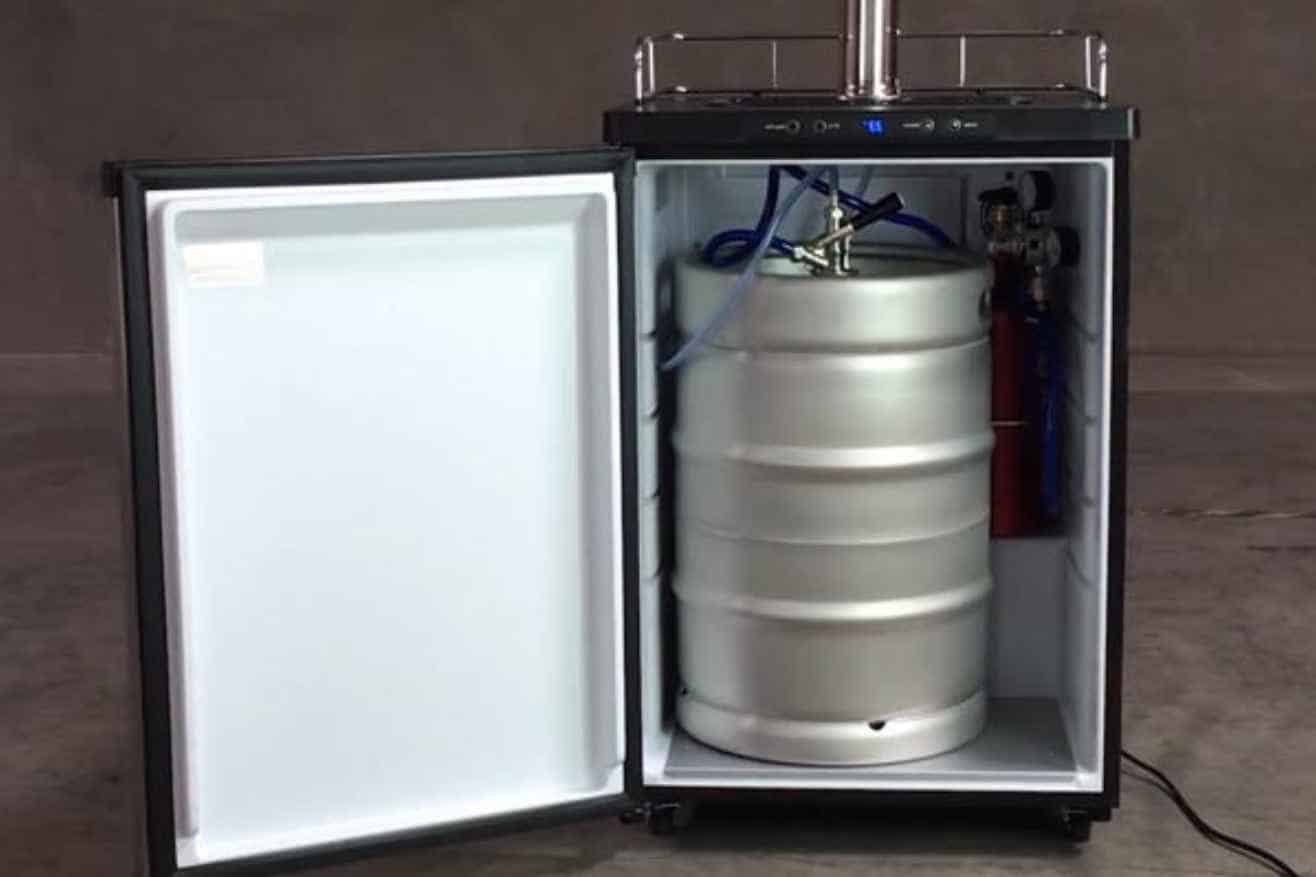

Articles
How Long Does Keg Beer Last In Kegerator
Modified: October 19, 2024
Learn how long keg beer lasts in a kegerator and find more helpful articles on beer storage and freshness.
(Many of the links in this article redirect to a specific reviewed product. Your purchase of these products through affiliate links helps to generate commission for Storables.com, at no extra cost. Learn more)
Introduction
Welcome to the world of kegerators, where the joy of enjoying a cold, refreshing beer on tap is just a tap away. If you’re a beer enthusiast or someone who loves to entertain, having a kegerator at home can be a game changer. But one question that often arises is how long the keg beer will last in a kegerator before it starts to go bad. In this article, we will explore the factors that can affect the shelf life of keg beer, as well as provide tips on proper storage and maintenance to ensure your beer stays fresh and delicious.
Before diving into the specifics, let’s first understand what a kegerator is. Essentially, a kegerator is a specialized refrigerator designed to store and dispense keg beer. It typically consists of a refrigerator unit with a tap tower and beer lines, allowing you to pour beer directly from the keg into your glass. Kegerators come in different sizes and configurations, from small countertop models to large units that can accommodate multiple kegs. They offer the convenience of having draft beer at home without the need for individual bottles or cans.
Now that you have a basic understanding of kegerators, let’s explore the factors that can affect the shelf life of keg beer. The freshness and quality of the beer can be influenced by various factors, including temperature, carbonation levels, exposure to light and oxygen, and the type of beer itself. All these factors can play a role in determining how long the beer will remain fresh and flavorful.
Proper storage and maintenance of your kegerator can greatly extend the shelf life of your keg beer. Maintaining the ideal temperature, cleaning and sanitizing the lines, and using the correct carbonation levels are essential steps to ensure the longevity of the beer. We will dive deeper into these topics and provide you with practical tips to keep your keg beer in optimal condition.
But how can you tell if the keg beer in your kegerator is still fresh? There are several telltale signs that indicate the beer has gone bad, such as off flavors, an unpleasant aroma, or excessive foaming. We will discuss these indicators and help you determine if it’s time to replace the keg.
When it comes to the recommended shelf life of keg beer, there isn’t a specific timeframe that applies to all beers. The ideal freshness window can vary depending on the beer style, brewery recommendations, and individual preferences. However, we will provide some general guidelines to help you gauge the freshness of your keg beer.
Finally, we will share some tips on how to extend the shelf life of your keg beer. From proper maintenance to using the right techniques for pouring and serving, these tips will help you get the most out of your keg and enjoy fresh, delicious beer for longer periods.
So, whether you’re a serious beer connoisseur or someone who simply enjoys a good pint, understanding how long keg beer can last in a kegerator is essential. By following the guidelines and tips outlined in this article, you can ensure that your keg beer remains fresh, flavorful, and ready to be enjoyed whenever you’re in the mood for a cold one.
Key Takeaways:
- Proper storage, temperature control, and maintenance are crucial for extending the shelf life of keg beer in a kegerator, ensuring fresh, high-quality pours for an extended period.
- Assessing appearance, aroma, taste, and carbonation levels helps determine the freshness of keg beer, allowing for an enjoyable drinking experience from your kegerator.
Read more: How Much Does A Kegerator Weigh
Understanding Kegerators
Kegerators are specialized refrigerators designed to store and dispense keg beer. They are popular among beer enthusiasts and those who love to entertain, as they offer the convenience of having draft beer at home. Understanding the key components and features of kegerators can help you make an informed decision when purchasing one for your own home.
At the heart of a kegerator is the refrigeration unit. This unit keeps the beer inside the keg at the optimal temperature, typically between 36 and 40 degrees Fahrenheit (2 to 4 degrees Celsius). Consistent temperature control is crucial for maintaining the freshness and flavor of the beer.
Another important feature of a kegerator is the tap tower. The tap tower is the vertical housing that holds the beer taps. It is usually located at the top of the unit for easy access. The number of taps on the tower depends on the size and configuration of the kegerator. Some models have a single tap, while others can accommodate multiple taps, allowing you to have different types of beer on tap at the same time.
The beer lines are an integral part of the kegerator as well. These lines connect the keg to the tap and allow the beer to flow from the keg to your glass. It is important to keep the beer lines clean and properly maintained to prevent any off flavors or contamination.
Carbonation is another key aspect of kegerators. The carbonation level affects the taste and mouthfeel of the beer. The most common method of carbonation in kegerators is using carbon dioxide (CO2) gas, which is stored in a separate tank. The CO2 gas is connected to the keg through a regulator, which allows you to control the carbonation level according to your preference.
When it comes to choosing a kegerator, there are various sizes and styles available to suit different needs. Countertop models are compact and ideal for small spaces or occasional use. Freestanding kegerators are larger and can accommodate multiple kegs, making them suitable for those who love to entertain or have a wide selection of beers on tap. Built-in kegerators are designed to be integrated into existing cabinetry or bar setups, providing a seamless and customized look.
In addition to the basic components, some kegerators offer additional features such as digital temperature control, LED lighting, and lockable doors. These features can enhance the usability and aesthetics of the kegerator, but they also come at a higher price point.
Understanding the different components and features of kegerators is essential in choosing the right one for your needs. Consider factors such as size, capacity, cooling system, and additional features when making your decision. By selecting the right kegerator, you can enjoy the convenience and pleasure of draft beer in the comfort of your own home.
Factors Affecting the Shelf Life of Keg Beer
When it comes to the shelf life of keg beer in a kegerator, several factors can influence how long the beer remains fresh and flavorful. Understanding these factors can help you take the necessary steps to extend the shelf life of your keg beer and ensure a high-quality drinking experience.
1. Temperature: The temperature at which the keg beer is stored has a significant impact on its shelf life. Ideally, keg beer should be kept at a consistent temperature between 36 and 40 degrees Fahrenheit (2 to 4 degrees Celsius). Higher temperatures can accelerate the aging process of the beer, leading to off flavors and a shorter shelf life. It’s important to maintain proper temperature control within your kegerator to preserve the freshness of the beer.
2. Carbonation: Carbonation levels play a crucial role in preserving the flavor and mouthfeel of keg beer. The appropriate carbonation level depends on the beer style, so it’s important to follow the recommended guidelines provided by the brewery or beer supplier. Overcarbonated beer can result in excessive foaming and a shorter shelf life, while undercarbonated beer may lose its desired characteristics over time.
3. Light Exposure: Exposure to light, particularly UV rays, can have a detrimental effect on keg beer. Light can cause the beer to develop a “skunky” flavor due to the reaction between hops and light. To prevent this, it’s important to store your kegerator in a dark area or use UV-blocking materials to shield the beer from light.
4. Oxygen Exposure: Oxygen is another factor that can negatively impact the shelf life of keg beer. Oxygen can oxidize the beer, leading to stale flavors and a shorter shelf life. Properly sealing the keg and minimizing exposure to oxygen during the dispensing process is essential. Always ensure that the keg is properly pressurized and that beer lines are free from any leaks.
5. Beer Style: Different beer styles have varying shelf lives. Lighter and lower-alcohol beers tend to have a shorter shelf life compared to stronger, more robust beers. This is because the alcohol content and hop bitterness in stronger beers act as natural preservatives. It’s important to consider the specific characteristics and recommendations of the beer style when determining its shelf life.
6. Contamination: Contamination can occur if the kegerator or its components are not properly cleaned and sanitized. Bacteria or yeast growth can lead to off flavors and spoilage of the beer. Regular cleaning and sanitizing of the kegerator, beer lines, and taps are critical to maintaining the integrity and quality of the keg beer.
By paying attention to these factors and taking appropriate measures, you can maximize the shelf life of your keg beer in a kegerator. Proper temperature control, carbonation management, protection from light and oxygen, consideration of beer styles, and regular maintenance and cleaning are key to preserving the freshness and taste of your keg beer.
Proper Storage and Maintenance of Kegerators
Proper storage and maintenance of kegerators are essential to ensure the longevity and optimal performance of your keg beer. By following a few key steps, you can minimize the risk of spoilage, preserve the freshness of the beer, and enjoy a consistently high-quality pour every time.
1. Temperature Control: One of the most critical aspects of kegerator maintenance is maintaining the proper temperature. It is recommended to keep your kegerator at a temperature range of 36 to 40 degrees Fahrenheit (2 to 4 degrees Celsius). This temperature range helps prevent the growth of bacteria and maintains the beer’s freshness. Regularly check and adjust the temperature settings of your kegerator to ensure accuracy.
2. Cleaning and Sanitization: Regular cleaning and sanitization of your kegerator are crucial to remove any potential contaminants and ensure the beer’s quality. Clean the interior of the kegerator using a mild detergent or specialized beer line cleaning solution. Be sure to also clean and sanitize the beer lines, tap faucets, and couplers according to the manufacturer’s recommendations to prevent any build-up or contamination.
3. Carbonation Levels: Carbonation plays a significant role in the taste and mouthfeel of your keg beer. Regularly check the carbonation levels to ensure they are within the recommended range for the specific beer style. Adjust the CO2 pressure on the regulator as needed to maintain the desired carbonation. Improper carbonation levels can affect the flavor, and either under-carbonated or over-carbonated beer can lead to excessive foaming and a less-than-optimal pour.
4. Prevent Light and Oxygen Exposure: Light and oxygen are enemies of beer freshness. Protect your keg beer from light exposure by storing the kegerator in a dark area or using UV-blocking materials. Additionally, ensure that the keg and beer lines are properly sealed to minimize oxygen exposure. Oxygen can oxidize the beer, leading to a stale flavor and shorter shelf life. Proper sealing and minimal oxygen exposure are key to preserving the integrity of the beer.
5. Prevent Contamination: Contamination can occur if the kegerator or its components are not properly cleaned and maintained. Bacteria and yeast can lead to off flavors and spoilage. Regularly clean and sanitize the kegerator, including all beer lines, taps, and couplers. Periodically check for any leaks or signs of mold or bacteria growth. By maintaining a clean and sanitary kegerator, you reduce the risk of contamination and ensure the quality of your keg beer.
6. Regular Maintenance: In addition to cleaning and sanitization, regular maintenance is crucial to keep your kegerator in optimal condition. Check the CO2 tank regularly for the remaining pressure and ensure it is filled as needed. Inspect the beer lines and connections for any wear or damage, and replace any parts that show signs of wear. Proper maintenance ensures the longevity of your kegerator and the quality of the beer it dispenses.
7. Inactive Periods: If you plan on not using your kegerator for an extended period, take the necessary steps to prevent any issues. Clean and sanitize the kegerator thoroughly, remove any remaining beer from the lines and components, and disconnect the CO2 tank to prevent any gas leaks or pressure issues. Properly storing your kegerator during inactive periods helps maintain its longevity and ensures a smooth start-up when you’re ready to use it again.
By following these proper storage and maintenance practices, you can enjoy fresh, high-quality keg beer from your kegerator for an extended period. Consistent temperature control, regular cleaning and sanitization, proper carbonation, prevention of light and oxygen exposure, attention to contamination, regular maintenance, and proper storage during inactive periods are key to preserving the freshness of your keg beer and maximizing the lifespan of your kegerator.
How to Determine the Freshness of Keg Beer
Determining the freshness of keg beer is essential to ensure that you’re enjoying a high-quality and flavorful pint. While keg beer has a relatively longer shelf life compared to packaged beer, it’s important to know how to assess its freshness to avoid any disappointments. Here are some methods to help you determine the freshness of keg beer:
1. Check the Keg Date: Start by checking the date of when the keg was filled or packaged. Many breweries provide a “born-on” or “filled-on” date on the keg. This information can give you a general idea of how long the keg beer has been in circulation. However, it’s important to note that different beer styles have varying ideal freshness windows, so understanding the specific recommendations for the style can provide more accurate information.
2. Appearance and Clarity: Assessing the appearance and clarity of the beer can give you indications of its freshness. Beer should have a clear and vibrant appearance, with no cloudiness or sedimentation. If the beer appears hazy or contains floating particles, it might indicate an issue with freshness or quality.
3. Aroma: A beer’s aroma can tell you a lot about its freshness. Take a moment to smell the beer and check for any unpleasant or off-putting aromas. Fresh beer should have a clean and inviting aroma, showcasing the specific characteristics of the style. If you detect any sour, musty, or overly sweet notes, it may be a sign of spoilage or oxidation.
4. Taste: The most crucial factor in determining the freshness of keg beer is the taste. Take a sip and evaluate the flavor profile. Fresh beer should have a well-balanced taste with distinct hop bitterness, malt sweetness, and any other specific flavors associated with the style. Look out for any off flavors, such as metallic, vinegary, or stale notes, which could indicate that the beer has gone bad.
5. Carbonation Levels: Carbonation is an important aspect of beer freshness. Fresh keg beer should have a proper and consistent level of carbonation, providing a pleasant mouthfeel. If the beer feels flat or overly effervescent, it may be a sign of improper carbonation or a quality issue.
6. Excessive Foam: While a proper level of foam is desirable in beer, excessive foaming can indicate a problem with the keg’s freshness. If the beer consistently produces excessive foam even with a carefully poured pint, it may suggest carbonation issues or spoilage.
7. Brewer Recommendations: Finally, check if the brewery or beer supplier provides any specific recommendations on the ideal freshness window for their keg beer. Some breweries may indicate a recommended consumption timeframe or “best by” date. Following these recommendations can help ensure that you’re enjoying the beer at its peak freshness.
By using these methods to assess the freshness of keg beer, you can make informed decisions about whether to continue enjoying the beer or replace the keg if it has gone bad. Trust your senses and rely on the appearance, aroma, taste, and additional guidelines provided by the brewery to ensure that each pint from your kegerator is a delightful drinking experience.
To ensure the freshness of keg beer in a kegerator, it is best to consume it within 30-45 days. After this time, the beer may start to lose its flavor and quality. Keep the kegerator at the recommended temperature and clean the lines regularly to prolong the beer’s shelf life.
Read more: What Is a Kegerator and What Is It Used For?
Recommended Shelf Life of Keg Beer in Kegerators
The recommended shelf life of keg beer in kegerators can vary depending on several factors, such as the beer style, brewery recommendations, and storage conditions. While there is no definitive timeframe that applies to all keg beers, understanding general guidelines can help you gauge the freshness and quality of your keg beer.
1. Beer Style: Different beer styles have varying ideal freshness windows. Lighter, low-alcohol beers, such as lagers or pilsners, are typically best consumed within 30 to 60 days of being kegged. These styles are more delicate and can lose their crispness and flavor if stored for extended periods. On the other hand, stronger, more robust styles, like stouts or barrel-aged beers, often have a longer shelf life. These beers can develop complex flavors over time and may retain their quality for several months or even years.
2. Brewery Recommendations: Many breweries provide recommendations on the ideal consumption timeframe for their keg beers. These recommendations may be found on the keg label, the brewery’s website, or through direct communication with the brewery. Some breweries even specify a “best by” or “enjoy by” date to guide consumers. Following the brewery’s recommendations can help ensure that you’re enjoying the beer at its peak freshness.
3. Storage Conditions: The way you store your keg beer within the kegerator can have a significant impact on its shelf life. Maintaining a consistent temperature between 36 and 40 degrees Fahrenheit (2 to 4 degrees Celsius) is crucial. Higher temperatures can accelerate the aging process and lead to off flavors. Furthermore, minimizing exposure to light and oxygen is critical to preserving the beer’s freshness. Ensure that your kegerator is properly sealed, and consider using UV-blocking materials to shield the beer from light.
While these guidelines can provide a general framework, it’s important to remember that freshness can vary depending on individual preferences and beer quality. Some beer enthusiasts might prefer to consume keg beer within a shorter timeframe to savor the beer at its freshest, while others may find enjoyment in aging certain styles for a longer period to explore the flavor development.
If you’re unsure about the specific freshness of your keg beer, rely on your senses. Assess the appearance, aroma, taste, and carbonation levels to determine if the beer is still fresh and enjoyable. Additionally, consulting with the brewery or beer supplier can provide more specific information about the ideal shelf life for their particular beer.
By understanding the general recommendations for keg beer shelf life and paying attention to storage conditions, you can ensure that your keg beer remains fresh, flavorful, and of the highest quality for the duration of its recommended lifespan. Cheers to enjoying the delightful experience of draft beer from your kegerator!
Extending the Shelf Life of Keg Beer
While the shelf life of keg beer is influenced by various factors, there are steps you can take to extend its freshness and quality. By following these tips, you can enjoy your keg beer for an extended period and maximize its shelf life:
1. Maintain Proper Temperature: Temperature control is crucial in preserving the freshness of keg beer. Keep your kegerator at the recommended temperature range of 36 to 40 degrees Fahrenheit (2 to 4 degrees Celsius). Avoid frequent temperature fluctuations, as they can accelerate the aging process and affect the flavor. Proper temperature control helps to inhibit the growth of bacteria and extends the shelf life of the beer.
2. Minimize Oxygen Exposure: Oxygen can rapidly spoil keg beer and affect its flavor. Minimize oxygen exposure by ensuring that your kegerator is properly sealed. Check for any leaks in the CO2 lines or connections and fix them promptly. When serving beer, avoid excessive splashing or agitation that can introduce oxygen into the system. The less oxygen the beer is exposed to, the longer it will retain its freshness.
3. Clean and Sanitize Regularly: Regular cleaning and sanitization of your kegerator components are essential to prevent contamination and maintain the quality of the beer. Clean the keg lines, tap faucets, and couplers using a specialized beer line cleaning solution. Sanitize the components after cleaning to eliminate any potential bacteria or yeast that could spoil the beer. Follow the manufacturer’s instructions and ensure thorough rinsing to remove any residue.
4. Proper Carbonation Levels: Maintaining the correct carbonation levels is crucial for preserving the flavor and mouthfeel of keg beer. Monitor the CO2 pressure with a regulator and adjust it as needed to meet the recommended carbonation levels for the specific beer style. Incorrect carbonation can lead to both under-carbonated and over-carbonated beer, affecting the taste and quality. Proper carbonation will help extend the shelf life and enhance the drinking experience.
5. Store in a Dark Environment: Exposure to light can cause beer to develop a “skunky” flavor, and UV rays can accelerate the breakdown of hop compounds. Store your kegerator in a dark environment or use UV-blocking materials to shield the beer from light. This will help maintain the beer’s freshness and flavor, extending its shelf life by preventing light-induced degradation.
6. Rotate and Use Beer Efficiently: If you have multiple kegs in your kegerator, it’s important to rotate them to ensure equal consumption and prevent any one keg from sitting for too long. Using the beer efficiently helps maintain freshness as it reduces the time the beer is exposed to air. Monitor the levels of each keg and plan your consumption accordingly to keep a steady rotation and enjoy the freshest beer possible.
7. Follow Brewery Recommendations: Pay attention to any specific recommendations provided by the brewery regarding the shelf life and optimal consumption of their keg beers. Breweries often have insights into their specific beer styles and can provide valuable guidance on how to extend the shelf life and preserve the intended flavors. Following their recommendations can help you get the most out of your keg beer.
By implementing these practices, you can significantly extend the shelf life of keg beer and enjoy fresh, high-quality beer for an extended period. Proper temperature control, minimizing oxygen exposure, regular cleaning and sanitization, maintaining carbonation levels, storing in a dark environment, efficient usage, and following brewery recommendations are key to preserving the freshness and flavor of your keg beer.
Tips for Enjoying Fresh Keg Beer from a Kegerator
Having fresh keg beer on tap from your kegerator is a delight that beer enthusiasts and home entertainers enjoy. To ensure the best drinking experience, here are some tips for enjoying fresh keg beer:
1. Serve at the Right Temperature: Proper temperature is crucial for optimal flavor and aroma. Set your kegerator to the recommended serving temperature for the specific beer style. For most beers, a temperature range of 36 to 40 degrees Fahrenheit (2 to 4 degrees Celsius) is ideal. Enjoying your beer at the correct temperature enhances its nuances and ensures a refreshing taste.
2. Use Clean Glassware: Clean glassware is essential to fully appreciate the appearance, aroma, and flavors of keg beer. Before pouring, rinse your glass with cold water to remove any residue or dust. Avoid using glasses with residual soap or detergent, as they can negatively impact the beer’s head retention and overall quality.
3. Pour with Care: Pouring keg beer with care helps control the carbonation and enhances the overall presentation. Hold the glass at a slight angle and slowly pour the beer until it reaches about three-quarters full. Gradually straighten the glass as you pour to create a foamy head. This technique helps release aromatic compounds and provides an appealing visual appeal.
4. Allow the Beer to Settle: After pouring, allow the beer to settle for a moment before taking your first sip. This brief pause allows any excess foam to dissipate, revealing the true flavors and aromas of the beer. It also helps prevent an excessive release of carbonation, ensuring a smoother drinking experience.
5. Appreciate the Aromas: Take a moment to appreciate the beer’s aromas before taking a sip. Place your nose just above the glass and inhale gently. Note any hoppy, malty, fruity, or other specific aromas associated with the beer style. This sensory experience adds to the overall enjoyment of the beer.
6. Savor the Flavor: When you take your first sip, allow the flavors to coat your palate. Notice the balance between malt sweetness, hop bitterness, and any other flavors specific to the beer style. Take your time to savor each sip and appreciate the nuances as they evolve on your taste buds. Enjoying the flavors slowly allows you to fully experience the complexity and depth of the beer.
7. Share and Enjoy with Friends: Keg beer is meant to be shared and enjoyed with friends and loved ones. Invite others to join in the experience and relish the fresh beer together. Sharing the keg beer not only enhances the social aspect but also allows you to try a variety of beers and expand your beer knowledge.
8. Monitor and Rotate Kegs: Keep an eye on the levels of your keg beer to ensure you consume it within the recommended freshness window. Rotate your kegs regularly to avoid leaving one keg untouched for an extended period. This practice ensures that you’re always enjoying the freshest beer possible.
9. Experiment with Pairings: Explore the world of beer and food pairings to enhance your keg beer experience. Try pairing different beer styles with complementary dishes to create delightful combinations. The unique flavors and characteristics of keg beer can enhance the flavors of food and elevate your culinary experience.
10. Follow Proper Maintenance: Regularly clean and maintain your kegerator to ensure the freshness and quality of the beer. Clean the beer lines, taps, and couplers regularly using the appropriate cleaning solutions. Inspect and replace any worn-out or damaged components to prevent contamination and ensure a smooth dispensing process.
By following these tips, you can maximize your enjoyment of fresh keg beer from your kegerator. From serving at the proper temperature to appreciating the aromas and flavors, these practices enhance the sensory experience and make each pint a memorable one.
Conclusion
Having a kegerator and enjoying fresh keg beer at home is a true pleasure for beer enthusiasts and those who love to entertain. By understanding the factors affecting the shelf life of keg beer and implementing proper storage and maintenance practices, you can extend the freshness and quality of your keg beer.
A kegerator provides the convenience of having draft beer on tap, allowing you to enjoy a perfectly poured pint in the comfort of your own home. Understanding the key components of a kegerator, such as the refrigeration unit, tap tower, beer lines, and carbonation system, ensures optimal performance.
Factors like temperature, carbonation levels, light exposure, oxygen exposure, and beer style can all affect the shelf life of keg beer. Maintaining the recommended temperature, minimizing oxygen exposure, protecting keg beer from light, and following brewery recommendations can help preserve the freshness and flavors.
Proper storage and maintenance of kegerators are essential. Regular cleaning and sanitization of the kegerator components, maintaining the correct carbonation levels, and preventing contamination are key practices to ensure the longevity and quality of your keg beer.
Determining the freshness of keg beer relies on assessing its appearance, aroma, taste, and carbonation levels. Checking the keg date, consulting brewery recommendations, and using your senses will help you determine the beer’s freshness and enjoy it at its best.
While there is no one-size-fits-all shelf life for keg beer, understanding the general guidelines for different beer styles and considering storage conditions can give you a good idea of its lifespan. By following the recommended practices and monitoring freshness, you can enjoy fresh, flavorful keg beer for an extended period.
To further enhance your experience, proper serving techniques, using clean glassware, appreciating aromas, savoring flavors, and sharing with friends can elevate the enjoyment of keg beer from your kegerator.
In conclusion, with the right knowledge and practices, you can fully embrace the joy of having fresh keg beer on tap from your kegerator. By paying attention to storage, maintenance, freshness, and serving techniques, every pour will be a delight. Cheers to enjoying the crisp, flavorful, and refreshing experience of keg beer at home!
Frequently Asked Questions about How Long Does Keg Beer Last In Kegerator
Was this page helpful?
At Storables.com, we guarantee accurate and reliable information. Our content, validated by Expert Board Contributors, is crafted following stringent Editorial Policies. We're committed to providing you with well-researched, expert-backed insights for all your informational needs.
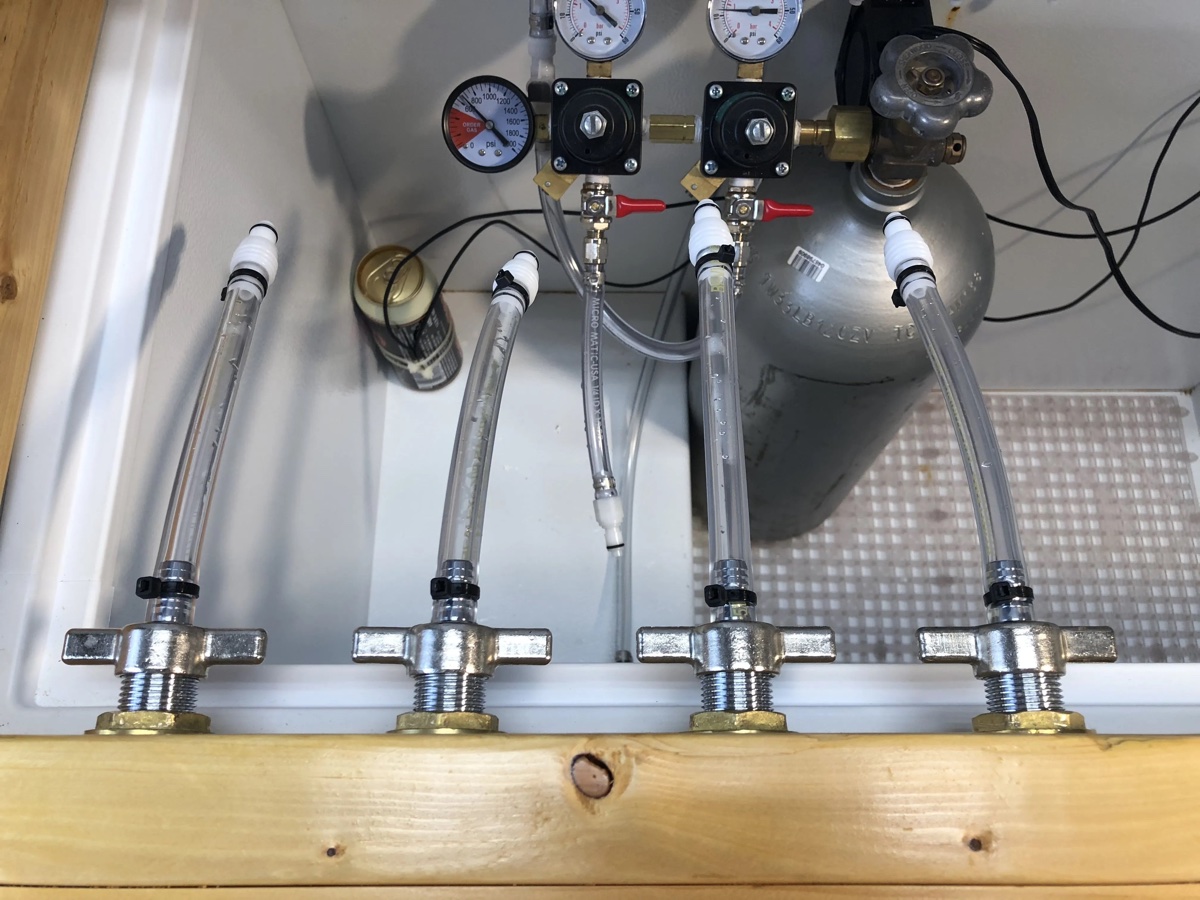
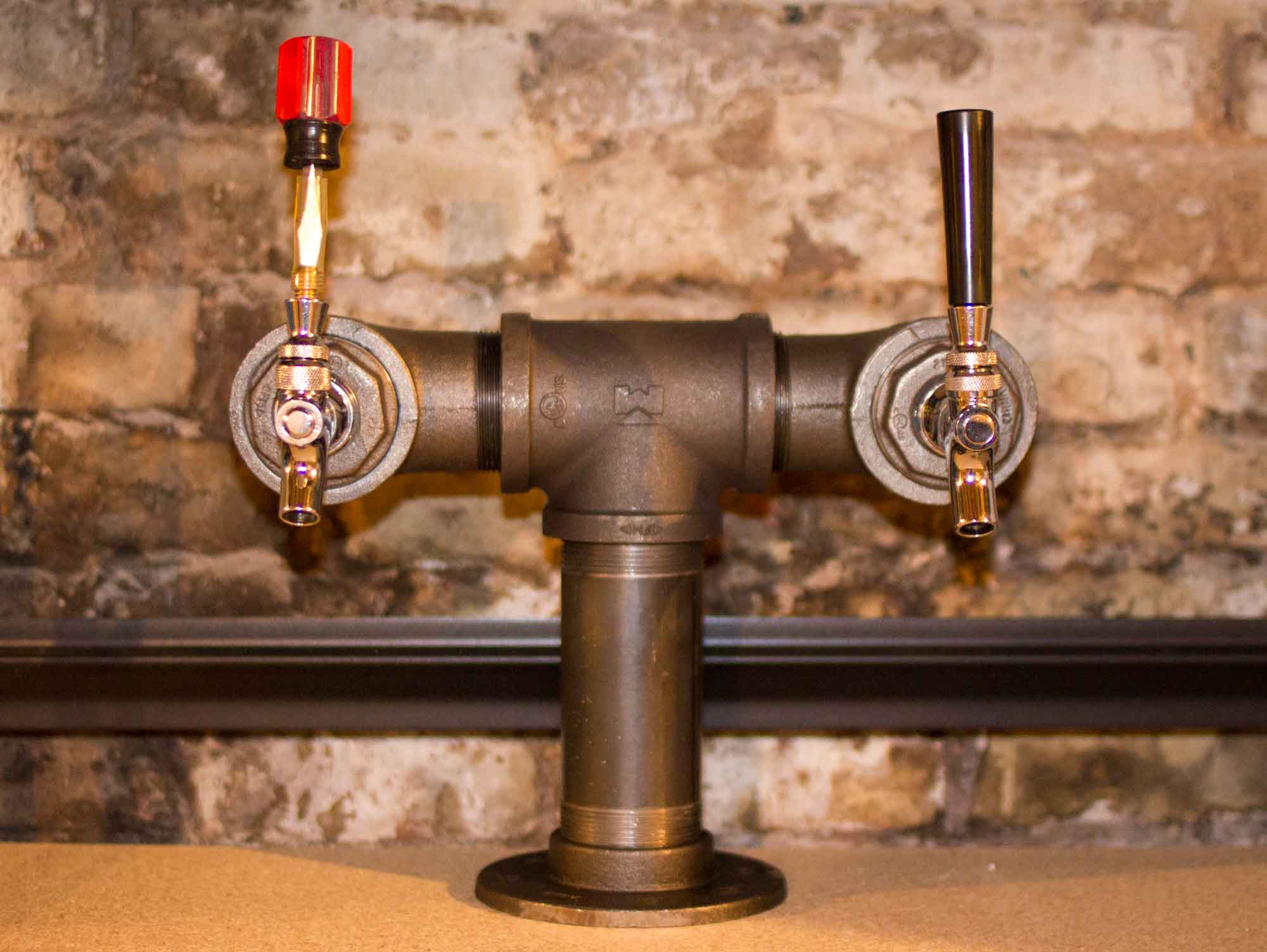

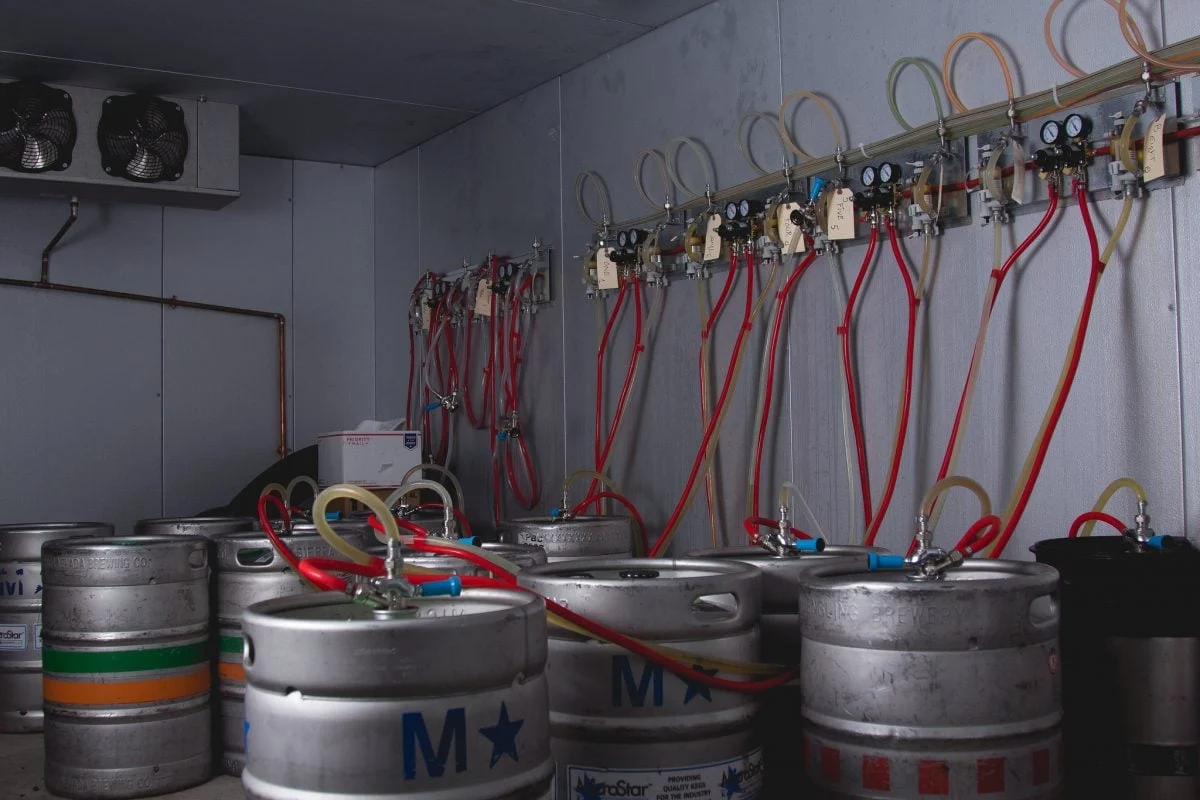
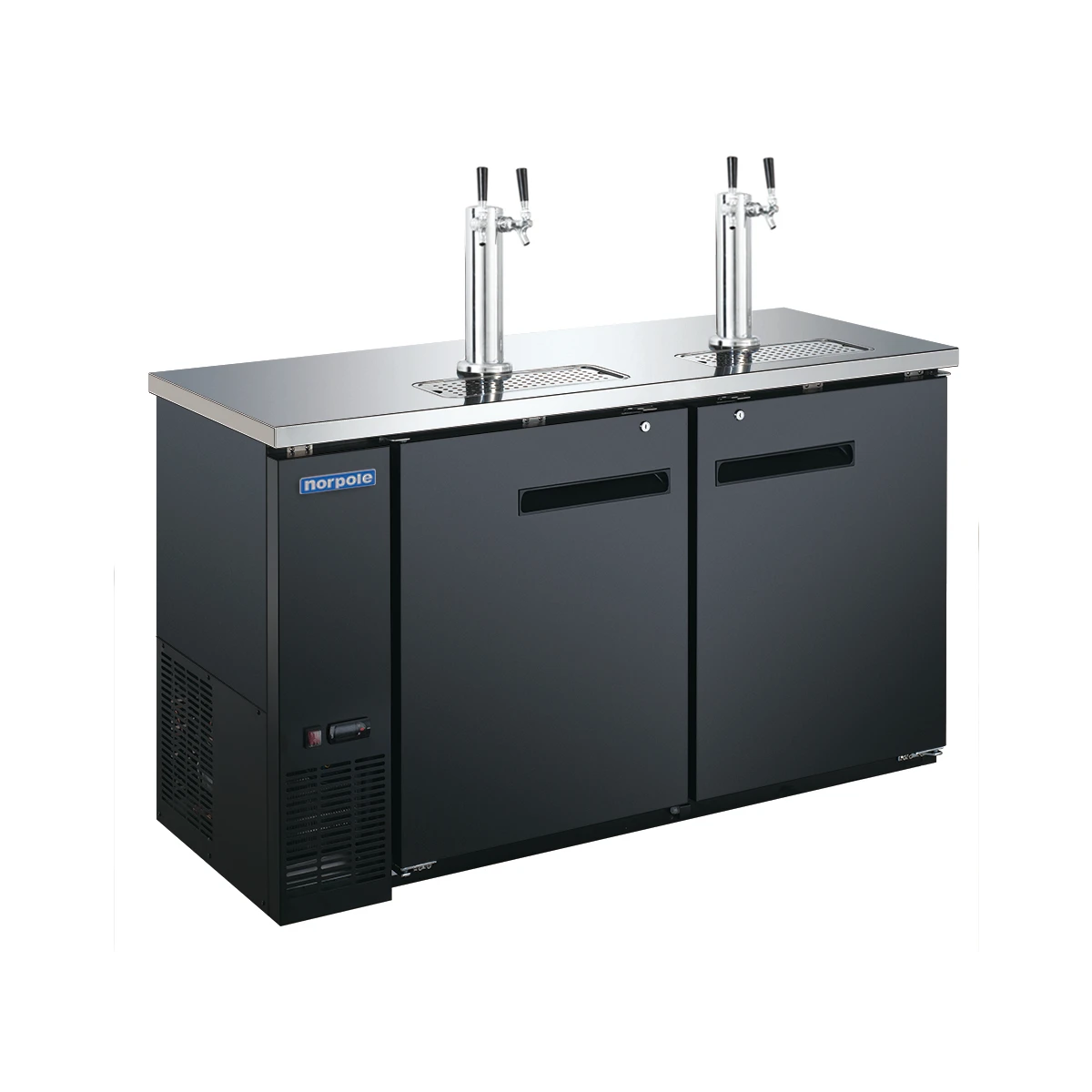
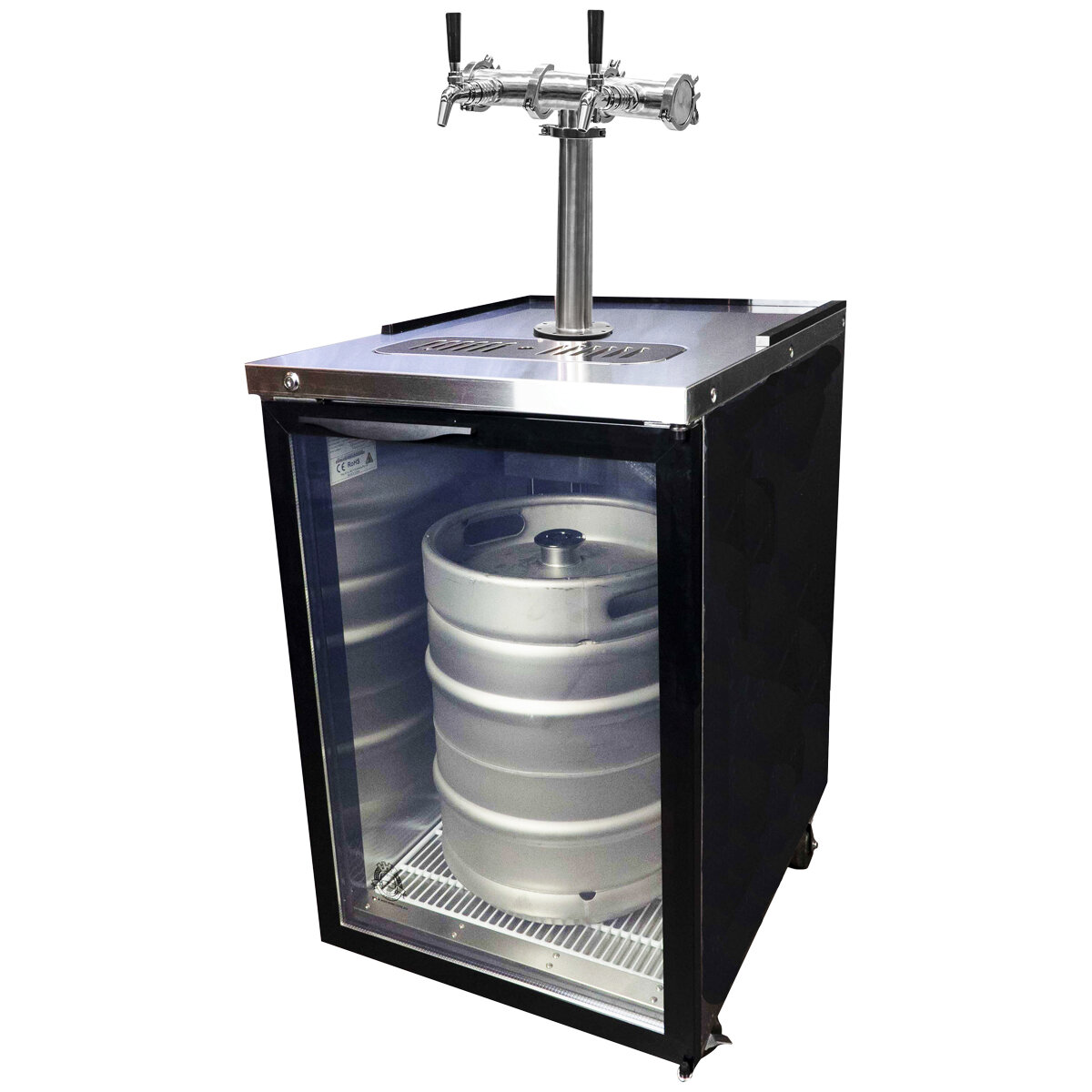
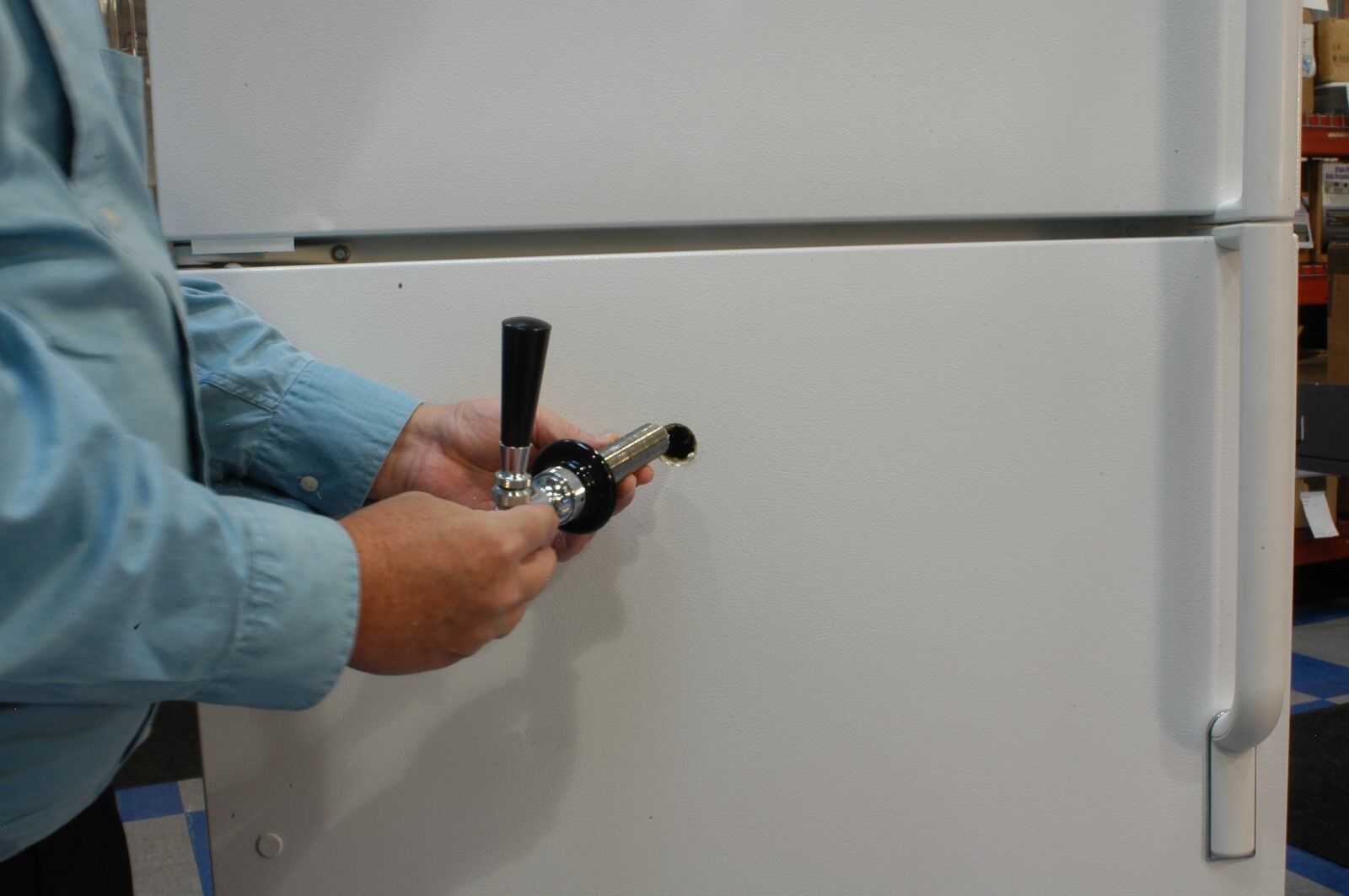

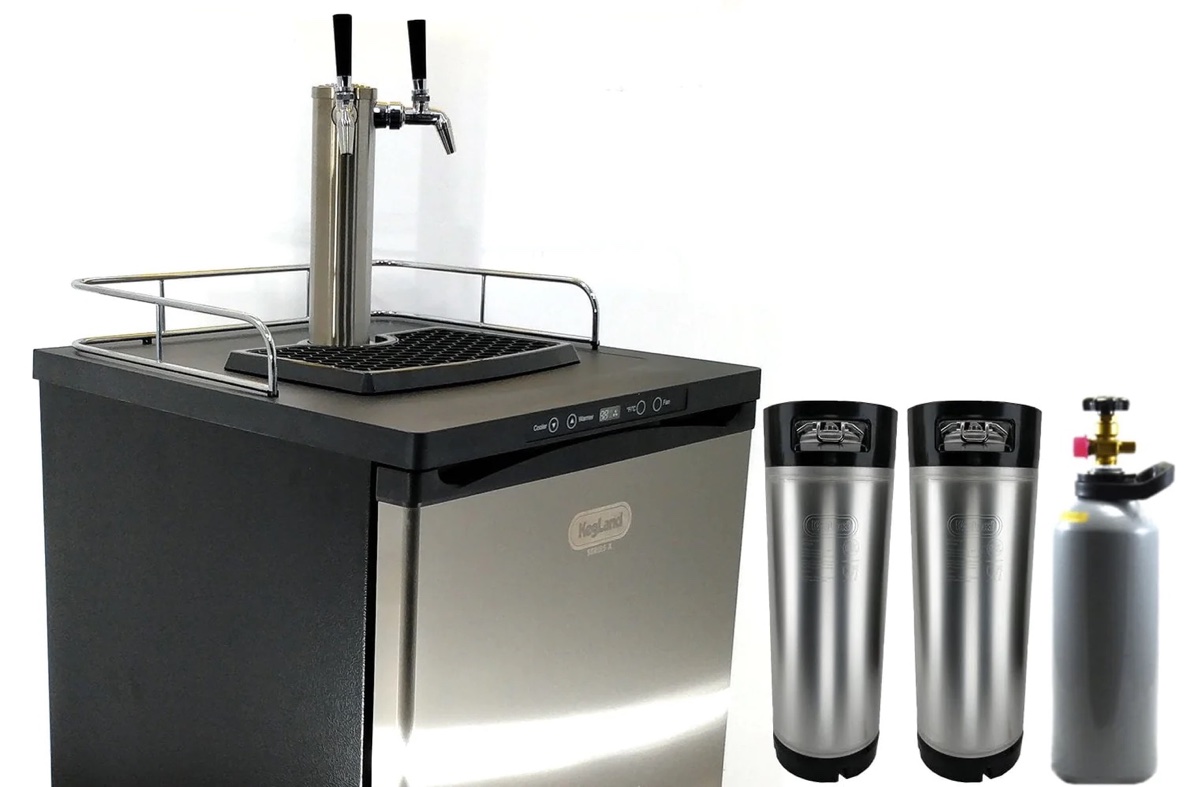
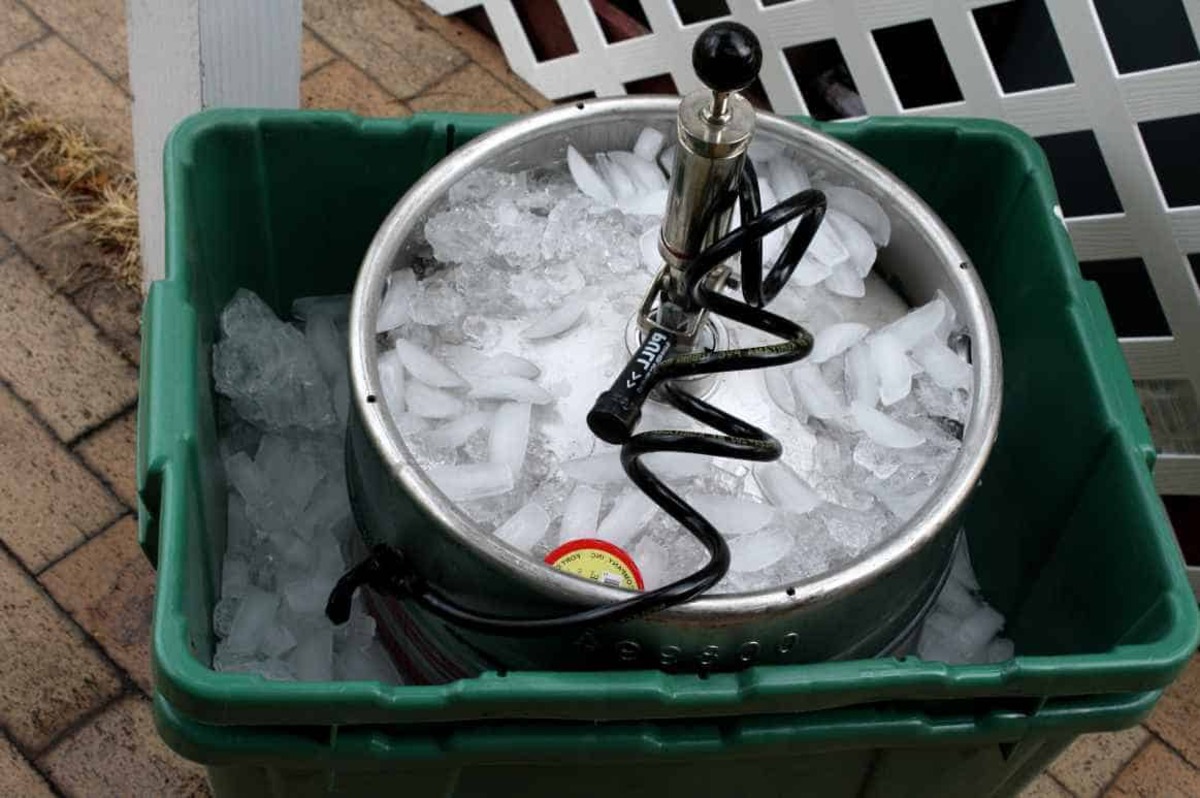
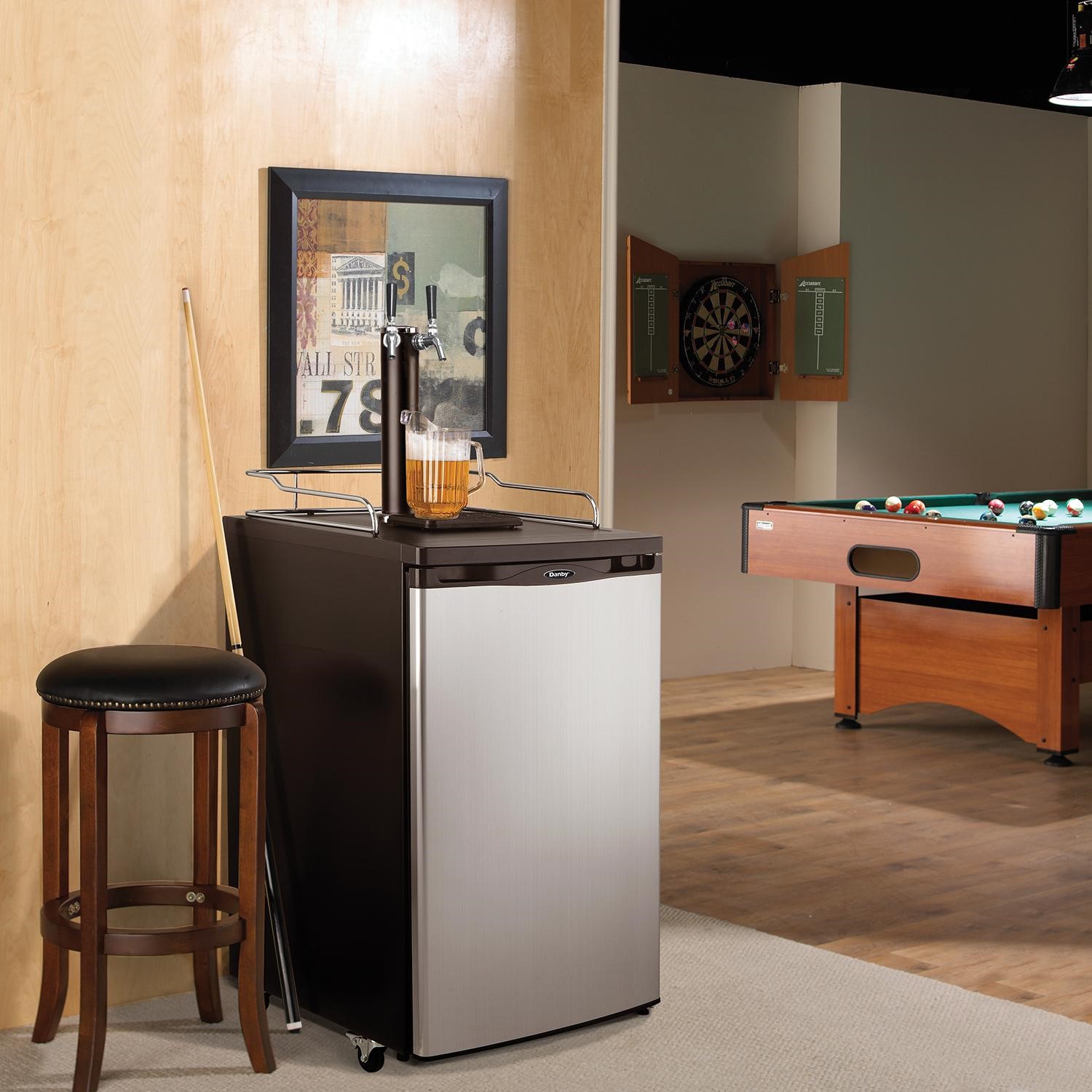

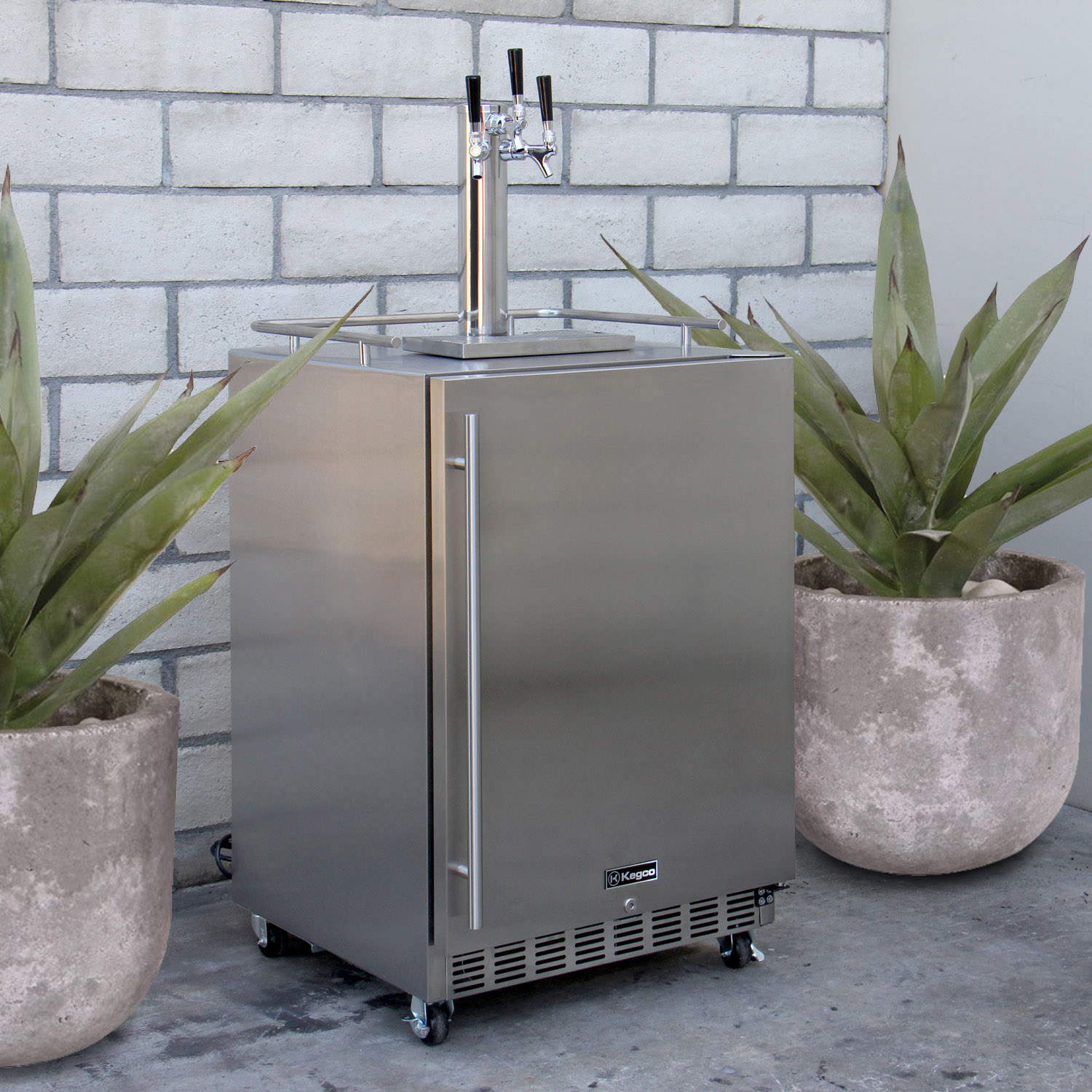
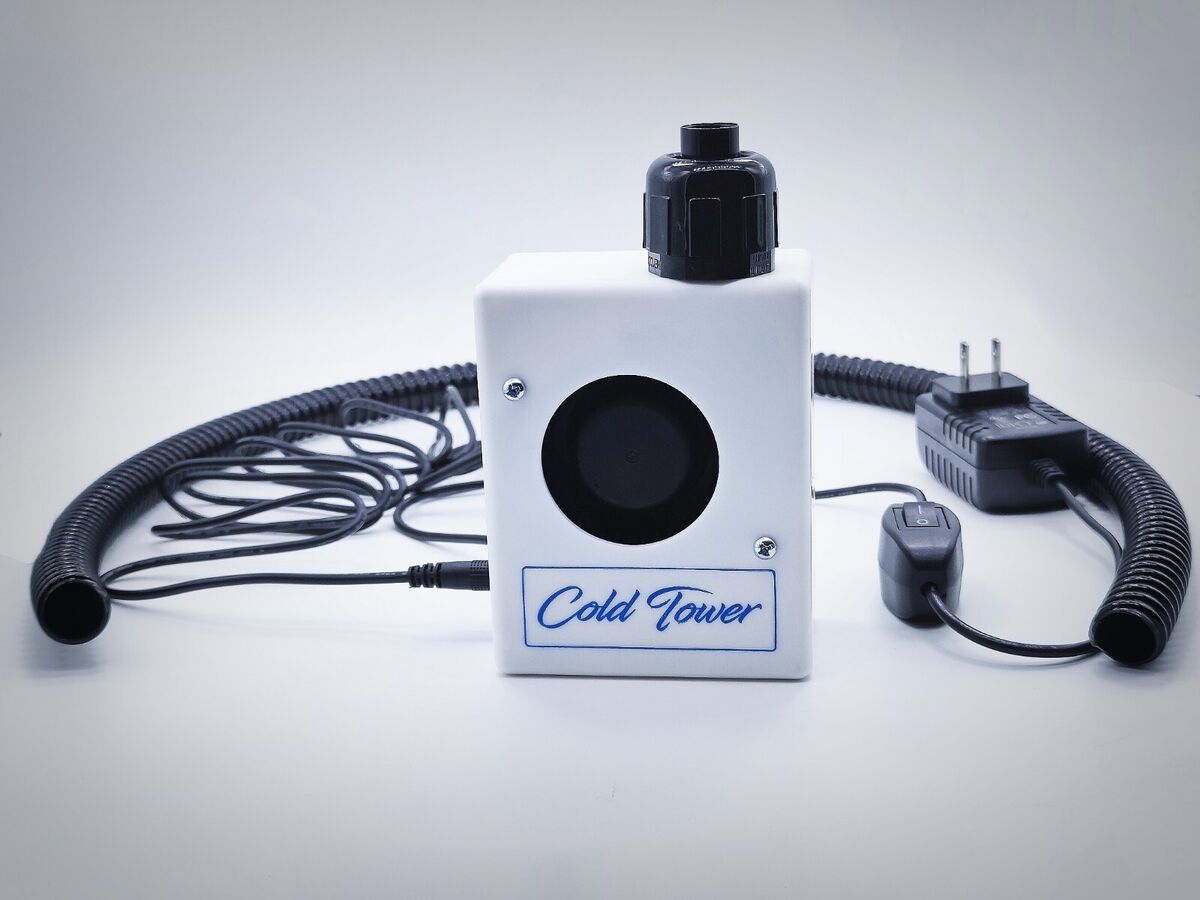

0 thoughts on “How Long Does Keg Beer Last In Kegerator”